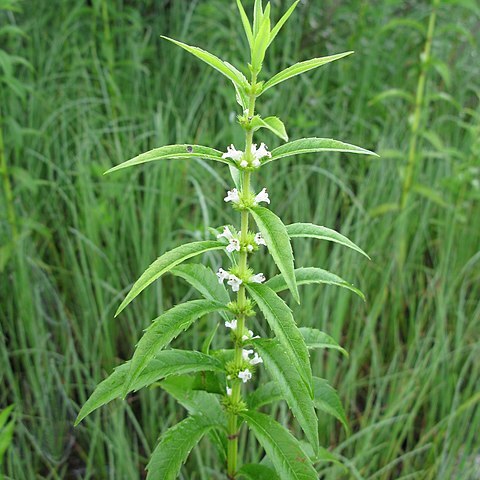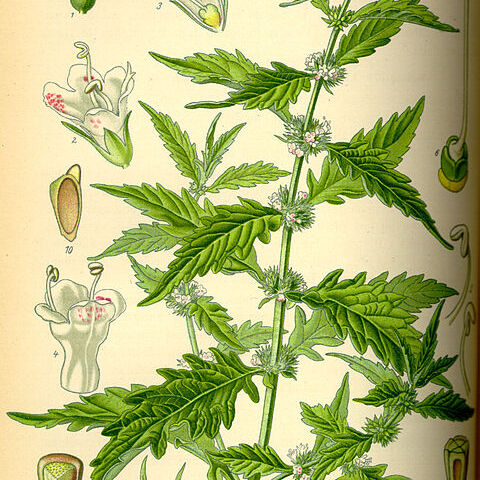Herbs perennial, usually with enlarged rhizomes. Leaves dentate or pinnatifid. Verticillasters sessile, many flowered, subtended by minute bracteoles; floral leaves similar to stem leaves, gradually reduced upward; outer bracteoles equal to longer than calyx. Flowers sessile. Calyx campanulate, ± regular, glabrous inside; teeth 4 or 5, equal or 1 larger. Corolla campanulate, 2-lipped, throat intricately villous; upper lip entire or emarginate; lower lip 3-lobed, middle lobe larger than lateral lobes. Anterior stamens fertile, slightly exserted, straight, posterior 2 rudimentary or filiform, apex clavate or capitate; filaments glabrous; anther cells 2, parallel, becoming divergent. Style exserted, apex 2-cleft; lobes flattened, acute, equal or posterior smaller. Nutlets brown, dorsiventrally flattened, ± adaxially ribbed, glabrous or adaxially glandular, base cuneate, margin thickened, apex truncate.
Perennial, odourless herbs with creeping rhizomes. Lvs simple, coarsely toothed to pinnatisect. Verticels many-flowered, in dense, discrete, globose whorls. Bracts usually similar to lvs. Calyx campanulate, 13-nerved, not gibbous at base; teeth 5, equal. Corolla tube mostly < calyx; lobes 4, subequal, the uppermost usually widest. Stamens 2, exserted, divergent; staminodes 0 or 2. Style gynobasic, its branches equal. Nutlets angular, with broad margin, mostly smooth; apex truncate.


